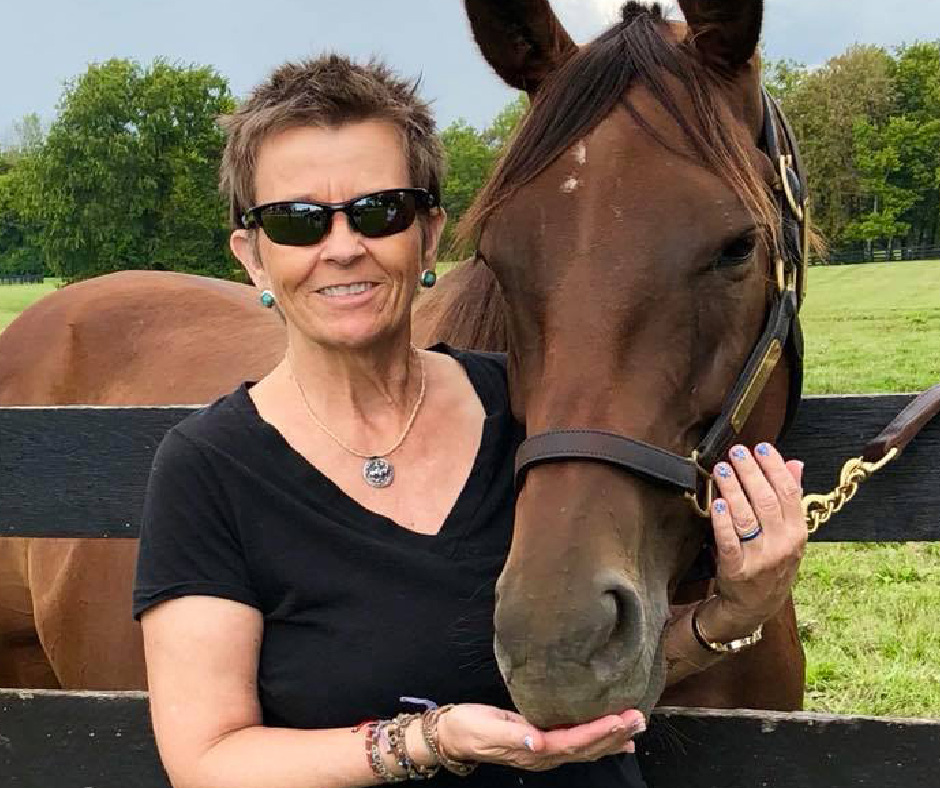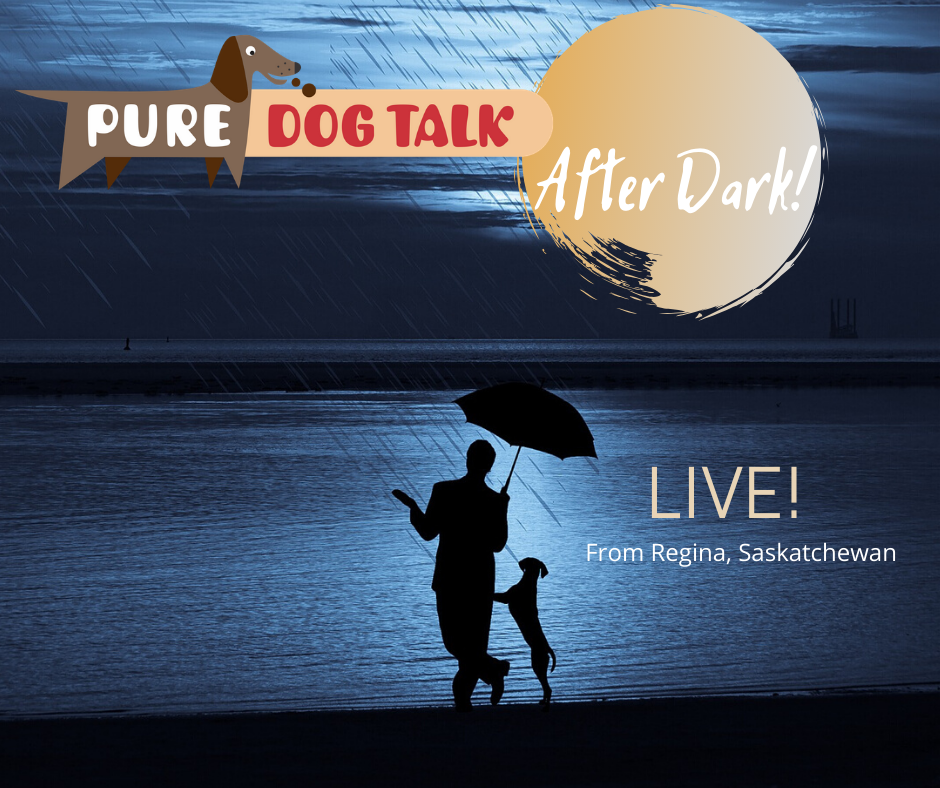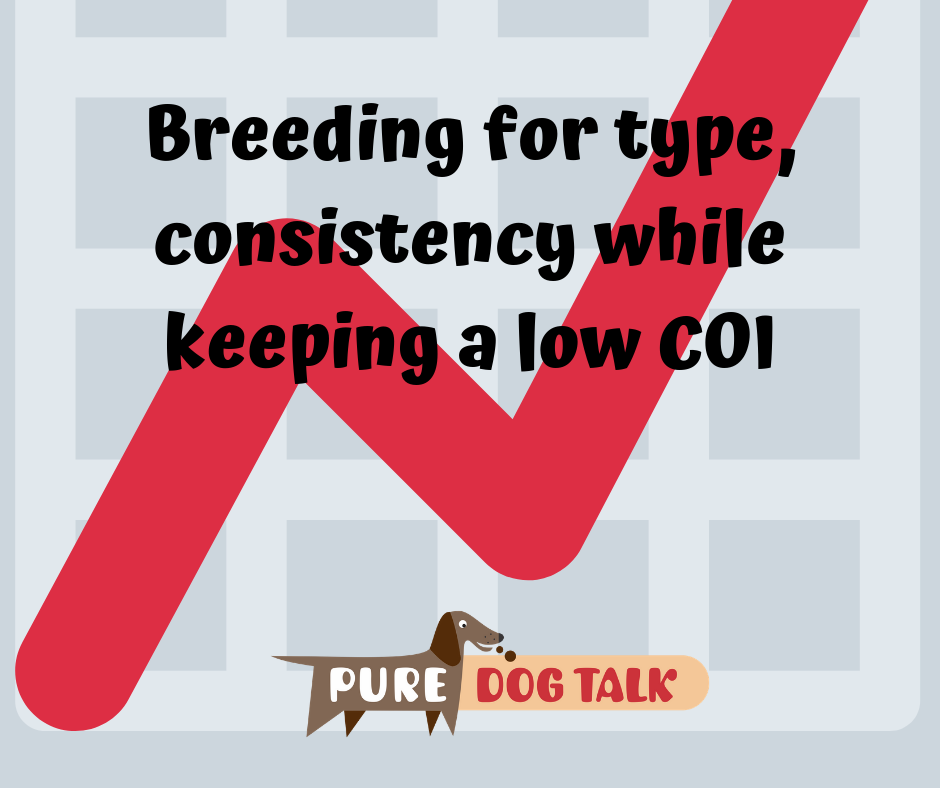660 – Peacock Feet and Finding Breed Type in Toy Dogs
Peacock Feet and Finding Breed Type in Toy Dogs
Dale Martenson, breeder of Touche Japanese Chin, joins host Laura Reeves for an enlightening discussion of breed type in toy dogs. He encourages judges, exhibitors and breeders to focus on the critical details of beauty and not get hung up in fault judging.
“I hear people talking about either how they judged a group of dogs or breeders when they’re evaluating their puppies and all they’re talking about is the faults,” Martenson said, “and (all I can think is they’re looking at a) beautiful flock of Peacocks and all they see is a bunch of ugly feet and crooked toes running at them. They’re missing the point of this breed and all of the work that goes into the details that make these breeds so hard to raise and so intricate and so desirable.
“I think the biggest insult somebody can give you is that you were generic because there’s nothing about the toy dogs that’s generic. And we have a whole lot of very breed specific type that you have to get into and start pulling apart.
“If you’re cute enough, somebody will bring you food … they do not need to get their own food.
“These toy breeds have very specific things in each of them that you can’t get away from. If you don’t have those, you don’t have a show quality specimen. You have a dog that’s irrelevant to the people who like the breed.
“We become a little bit like axe murderers when you miss our type because we’re trying to get markings, we’re trying to get size, we’re trying to get breed specific things in tiny litters with a lot of mortality. In Japanese Chin, we don’t have the good fortune of the Pointer where it says a good Pointer can’t be a bad color.
“The Japanese Chin, for example, their job was to be really pretty. Hang out with the geisha, you know, very quietly sit with their friends and say, ‘ohh, my gosh, she’s gotten fat.’ You know, I mean, just being that little best friend and not really liking anybody else.”
617 – Breed Type First: Mary Dukes on Judging Dogs
Breed Type First: Mary Dukes on Judging Dogs
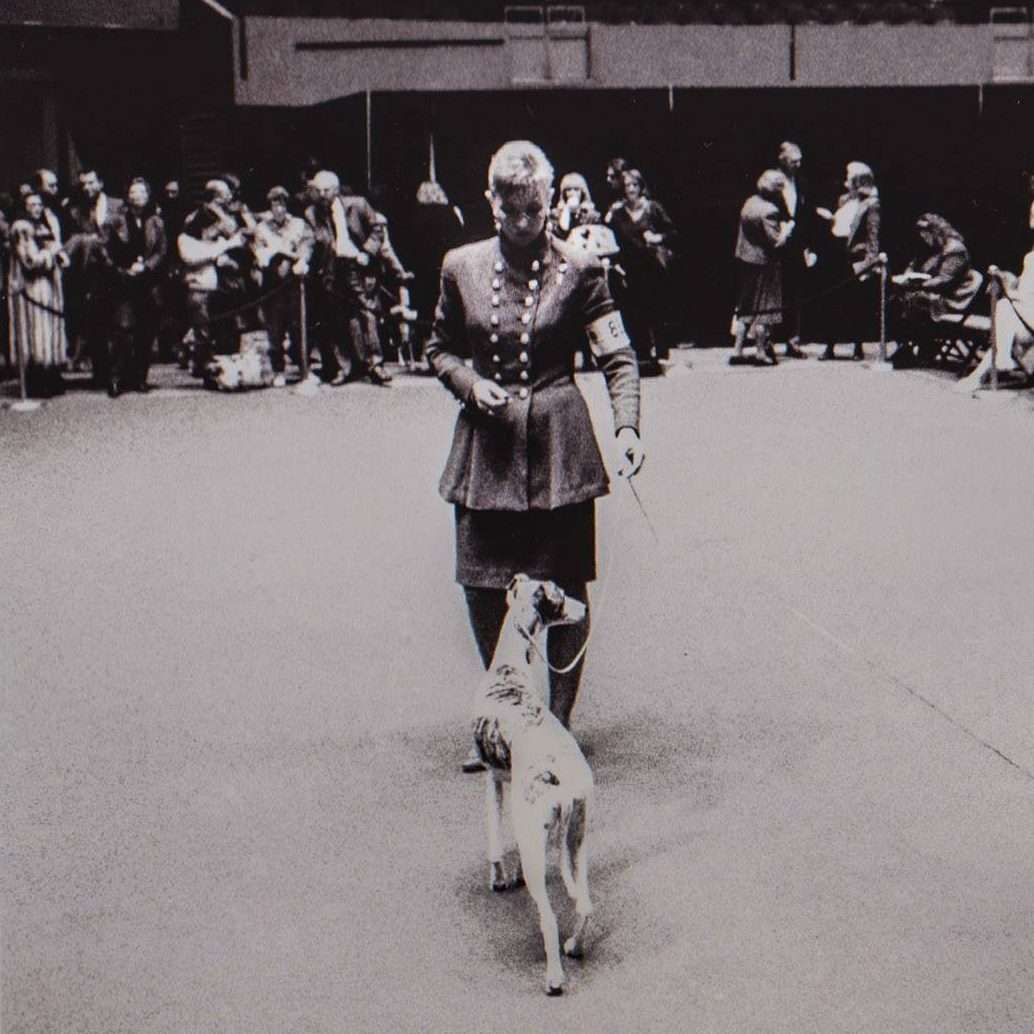
Mary Dukes in her handling days heyday.
Legendary handler, rep and now judge Mary Dukes continues her conversation with host Laura Reeves. Today they talk about judging, handling and all-time favorite dogs.
“I’m a type-first girl all the way,” Dukes said, quoting the notable Anne Rogers Clark common wisdom to sort first on type and then reward the soundest of the typical dogs. “I’m forgiving of leg faults, especially on the down and back. As long as it doesn’t offend me, it’s probably good enough.
“I do firmly believe this. A good judge can see right through a poor handling job. Sometimes it’s frustrating. I watched a breed in Orlando. It wasn’t a hound breed but a breed that I’m very familiar with and it was so frustrating because it’s an owner -handled breed for the most part and the best dogs in there were being tragically handled. It was so frustrating because there was a dog in there that’s beautiful and every time the judge looked at him (the handler) wasn’t even trying to do anything with him. His legs were everywhere. You know, all she was doing was feeding him basically.
“And I thought, God, if you could just rack him up once, just rack him up once and pull him up over his front and break him over, (the judge) just needs to see it once.
“I might be the one that will turn into Frank Sabella. I mean, not in terms of swapping dogs or anything, because he did that to me a million times, but I know he got in trouble for it. But in terms of, ‘Here’s what I want you to do. Can you go from this corner to that corner on a loose lead? Can you do that?’ If they give me five steps, we’re golden.
“At the end of the day, it’s putting up the best dog.”
Pro tip: Pacing
“It’s all about throwing them off balance when you take the first step. I always like to go into them because they learn pretty quick. A lot of people they jerk (the dog) and then ‘let’s go.’ Well, then the dog starts anticipating that. I just would turn them into me and then just bump them. Just bump their shoulder as you start your down and back.”
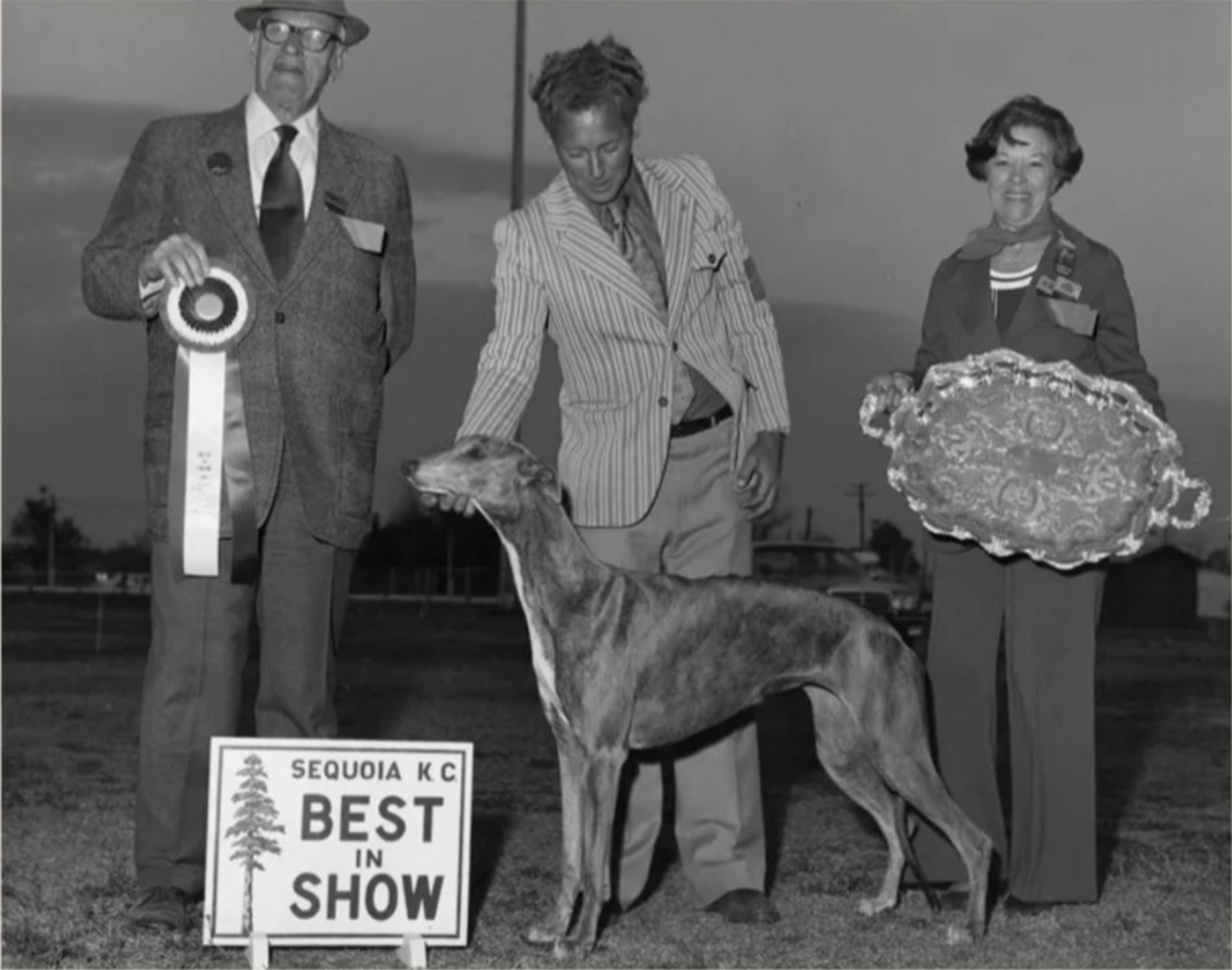
Ch. Aroi Talk of the Blues, ‘Punky’, shown with handler Corky Vroom. Judge Anne Rogers Clark “discovered” Punky in 1975, when she made her Best of Breed from the Puppy class at the Greyhound Club of America specialty in Santa Barbara. Punky was the Top Dog of all breeds in 1976.
Mary’s fantasy best in show line up would be judged by Michelle Billings. It would feature Mick, the Kerry Blue who shows up in most judges’ all-time best line ups, but many of her other choices are more esoteric and focused on dogs she knew personally. From Iron Eyes, the Bouvier to Scarlett Ribbons, the Italian Greyhound. Listen in to hear her personal choice for Best in Show.
370 – How Judges Decide Placements: Conformation and Obedience
How Judges Decide Placements: Conformation and Obedience
Part two of our panel discussion at the Regina Kennel and Obedience Club’s Prairie Christmas Dog Show with an international coterie of judges focuses on: the details of breed type and presentation, exercising patience, judging uncropped and undocked dogs, legislation and growing our sport.
From Sue-Ellyn Rempel on making a final placement:
“I guess for me general outline for starters and then movement is very breed specific for me. So I kind of go by that…. they have to scream German Shepherd … a lot of times we get … a class of 5 and they’re all generic … they get from point A to point B really well they stack and their moderately angulated like the breed should be but they’re not smooth, they don’t flow in the correct way…. like the make and shape difference in the shape from a Great Dane to a whippet… whippets you want the beautiful soft gentle curves… that’s gotta hit me right away… when I look at them, that they are the right shape and then when they take the steps, that puts the picture together for me.”
From Frances Smith on what she sees in the ring:
“I find it very important to reward the breed specific, unique characteristics because (there are) a lot of generic dogs, too many generic dogs, too many dogs that finished championships that really… shouldn’t be … because supposedly a champion is a superior specimen of the breed. So it’s up to us to keep the quality and to reward those breed specific points because without them we lose those identifying points of each breed. I want to add another thing that’s very important, temperament, which is also one of the 6 points in type, … because the temperament has to belong to the breed …without the correct temperament I don’t care if a dog is extremely showy, he’s gotta have the breed’s temperament. I don’t want just a fancy dancer in the ring … I don’t want to see a dog jumping and doing things that aren’t typical of his breed.”
From Diana McKenzie on changes she’s seen in her time in the sport:
“There’s been a ton of changes over the years in obedience … even training methods OK these days are so different from what they were 20-30 years ago. … unfortunately a lot of people go into obedience and they think it’s easy. OK rally is easy, yes. Obedience is not easy. It is not a given and it’s something that you as a handler have to work with your dog to attain a nice working relationship with and train the behaviors. Rally is easy to me, I shouldn’t say it’s easy to everyone, but it’s a wonderful venue to train with your dog and teach your dog in a positive way how to move its rear end and be aware of its rear end movement which a lot of people don’t do. (That’s) just one small thing that you can think of to work with them. Fronts, finishes, drops, all of that are in rally obedience as well as the heeling, so when you see a team in rally obedience and they are true team it’s wonderful. … in obedience … over the years training methods are changing. Corrections, harsh corrections, are becoming less and less used (people are) more into the purely positive methods. That’s wonderful, if you know how to do it properly. A lot of people don’t, therefore they get a brat in a dog that goes in (and says) “I don’t have to ’cause there are no consequences…”
309 — Breeding for type, consistency while keeping a low COI
Breeding for type, consistency while keeping a low COI

Dr. Victor Stora, veterinary medical geneticist, with some of his Shetland Sheepdogs.
Victor Stora, Shetland Sheepdog breeder, AKC/CHF Residency Recipient and Veterinary Geneticist at University of Pennsylvania, shares concrete information on breeding for type and consistency of style while keeping a low COI (Coefficient of Inbreeding).
Stora observed that many breeders fall in to one of two categories.
“People might fall in to health testing too much and losing type, or you have people ignoring health because they’re getting the type they want. The happy medium is where people should be,” Stora said.
Health test all you want, Stora noted, but keep in mind it doesn’t mean the dogs are free of disease… just all the ones you can test for. What are the really bad diseases that affect a breed, he queried, adding that the more “lethal” diseases get higher priority.
Health testing and COI are tools
“Once you get to the point that you have the animals that you’ve screened, choose the ones that have the least problems health testing wise and are most like the type you desire,” Stora recommended. “Health testing is a tool, not a meter to eliminate animals because they don’t pass the bar.”
He also strongly recommends incorporating carriers of some diseases in a breeding program. “If you eliminate carriers, assuming the carrier has no disease, you’re removing dogs that are healthy. You can zoom in *too* much on health testing, and lose what you had in the beginning.”
We don’t have all the answers yet
Stora also noted that the primary diseases we want to know about, epilepsy, cancer etc, we don’t have an answer and that they are likely environmental, plus genetic.
When it comes to autoimmune disease, Stora said the breeder’s goal is to have more genetic variation to combat it.
“Outcross to a point, line breed to a point. Watch what’s happening. If you don’t choose for fertility, you’re choosing against it. Fertility is a heritable trait,” Stora said. “Nobody got into this because it’s easy. It’s not.”
Finally, Stora counseled to stop breeding affected dogs once the breed or line has started making headway against that disease.
“If the disease is rare within a breed, never breed affected because you don’t have to. If it is common within the breed, you have to use affected,” Stora said.


